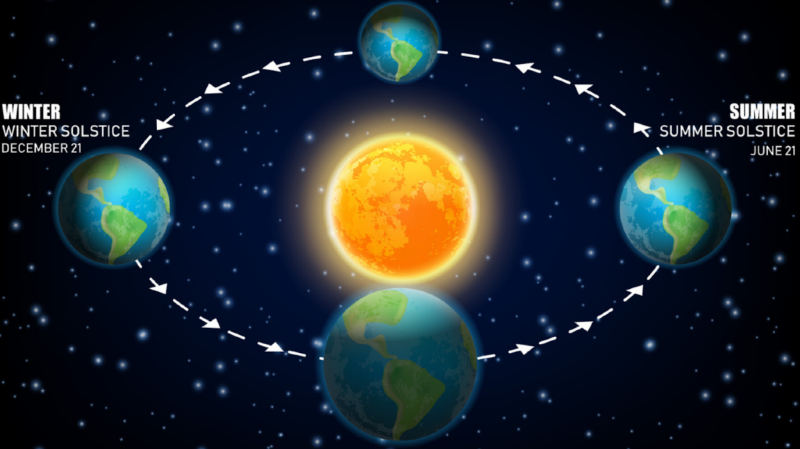
Equinox and Solstice Determined by Earth’s Tilt and Orbit Around the Sun.
by Kelly Vazquez, age 17
An equinox is an event in which day and night are approximately the same lengths of time everywhere and the sun stands on the equator. The autumnal equinox indicates that autumn is beginning, and the spring equinox signifies the start of spring. In the northern hemisphere, the autumnal equinox happens between September 21st and 24th. However, in the southern hemisphere, the autumnal equinox occurs around March 19th and 21st. This is due to the Earth's tilt and its orbit around the Sun.
The Earth's axis of rotation is a straight line that goes through the North and South Poles. As the Earth spins on its axis of rotation each day and travels around the orbital/ecliptic plane, it orbits around the Sun for a year. Throughout its path, the Earth maintains a constant axial tilt of 23.4 degrees from the orbital plane towards the Sun.
Even though the North and South poles each take turns pointing towards the Sun for six months every year; the North Pole always points towards the star Polaris and the South Pole always points towards the star Polaris Australis. But twice a year, neither points towards the Sun. This makes the Sun rest on the equator, thus creating the equinox.
The solstices, which occur twice a year, are occasions that mark when the Sun rests on the highest and lowest tropics and the poles are most tilted towards it. These tropics are on the Earth's latitudes, which are 23.4 degrees above and below the equator. One of the solstices happens between June 20th and 22nd, when the Sun sets on the Tropic of Cancer above the equator. To give an idea of it's location, the Tropic of cancer passes thoughout China, India, Mexico, the Middle East, and the northern part of Africa.
The equinox and solstices have played an important role in human history, more specifically agriculture. For example, the spring equinox has been a symbol of growth, the best time to plant and grow crops. The summer solstice is noted as a time when the land is fertile, indicating the start of a good harvest season. These events have had a great impact on human civilizations and will continue to do so as we advance in time.
[Sources: almanac.com; timeanddate.com; medium.com; Image Credit: reference.com]



